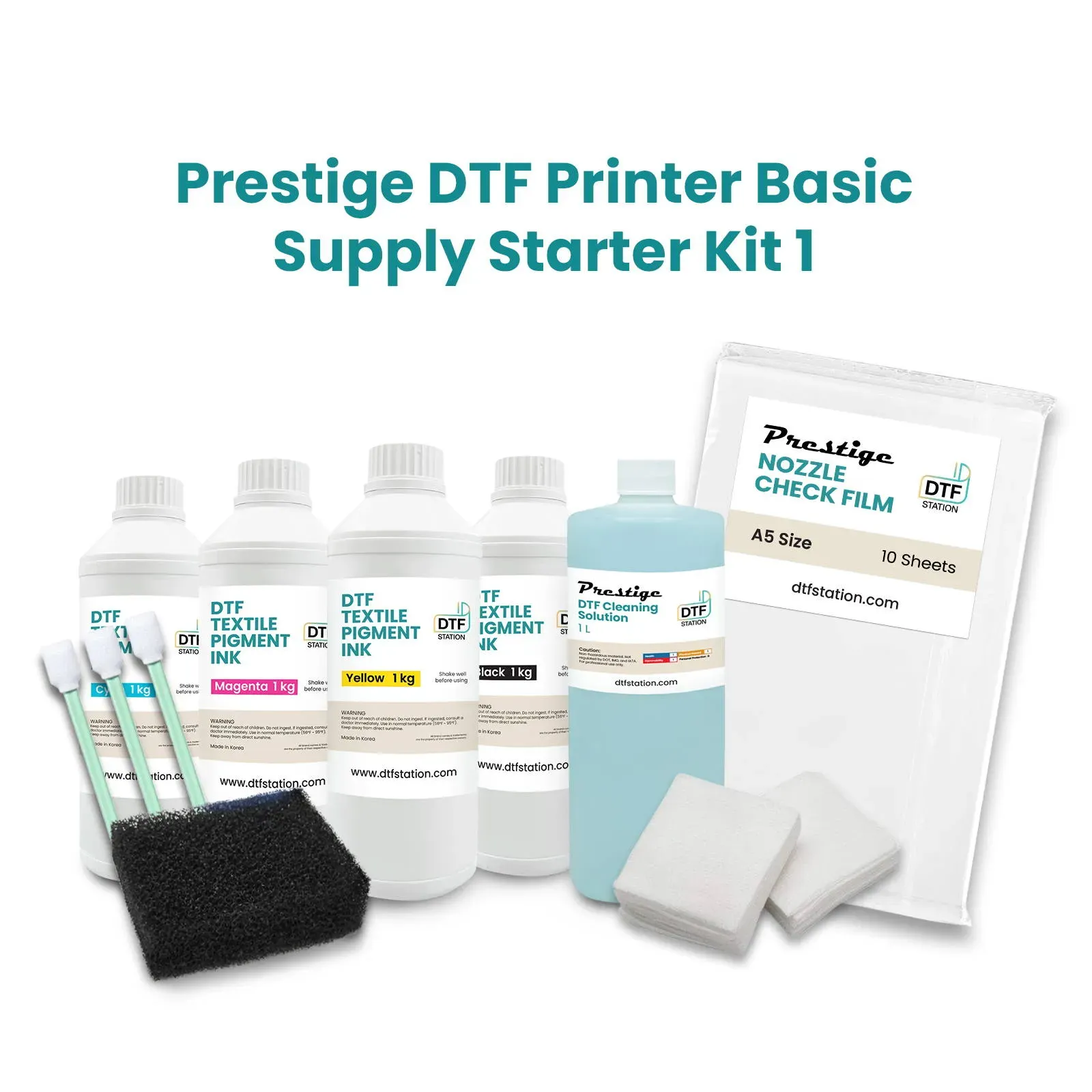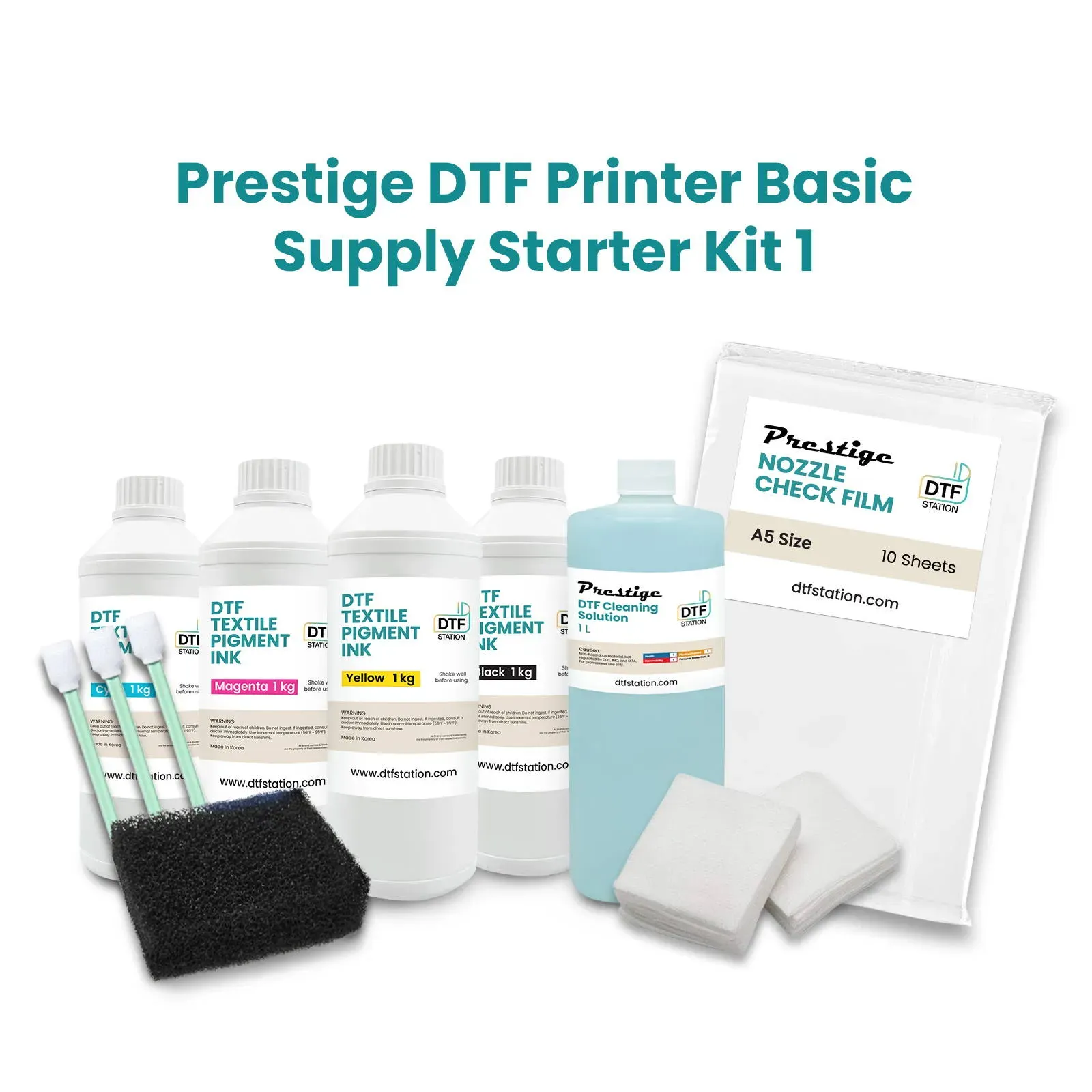DTF Supplies: Essential Components for Ultimate Printing
DTF Supplies are essential to the burgeoning field of Direct-to-Film printing, which is redefining the textile printing industry with its precise and high-quality output. As demand for personalized and vivid designs escalates, understanding DTF supplies such as DTF printers, films, and adhesives becomes critical for businesses aiming to thrive in this competitive market. This innovative process is not just about printing; it’s about utilizing the right tools, from specialty films that optimize color transfer to effective adhesives that ensure durability on various fabrics. With a strong focus on quality and efficiency, curiosity around DTF printing is drawing in both small businesses and large corporations alike. Explore the key components and trends that are shaping the future of textile printing in this dynamic landscape.
Diving deeper into the realm of Direct-to-Film technology, one uncovers a variety of indispensable materials and equipment vital for successful fabric printing. Known for its exceptional transfer techniques, the DTF printing method relies on specialized supplies like digital fabric printers and transfer films, which serve as the backbone of this innovative approach. Additionally, the inclusion of heat transfer adhesives enhances the adherence of prints, offering a seamless finish that caters to modern consumer needs. As the industry embraces advancements in printing solutions, the synergy between high-quality inks and efficient machinery is paving the way for vibrant, personalized textile products. Understanding these critical aspects not only empowers businesses but also ensures they keep pace with the rapid evolution in textile printing.
Understanding Direct-to-Film Printing Technology
Direct-to-Film (DTF) printing revolutionizes the textile printing industry by providing a unique approach to transferring designs onto fabric. This cutting-edge technology utilizes specialized DTF printers that modify the traditional inkjet process to accommodate films and powdered adhesives that ensure high-quality results. With precise ink application and the ability to produce vibrant, customized designs, DTF printing stands out in comparison to conventional methods. As consumers increasingly demand personalized garments and products, mastering DTF technology becomes essential for businesses aiming to thrive in this competitive landscape.
The DTF printing process involves several key components, including DTF films that serve as carriers for printed images. These films are coated with properties that promote optimal ink adhesion, enhancing durability and color vibrancy once transferred to the fabric. This process not only reduces the risk of fading but also improves the longevity of the finished product, allowing businesses to offer high-quality textile prints that meet customer expectations. As advancements continue within this technology, including the composition of inks and films, it’s clear that DTF printing represents a significant evolution in the textile sector.
The Role of DTF Printers in Textile Printing
DTF printers are essential tools in the direct-to-film printing process, enabling users to create stunning designs on various types of textiles. Unlike traditional printers, DTF printers have been specifically designed to accommodate the unique requirements of DTF technology, such as modifying ink application and integrating powder adhesive processes. Leading manufacturers, such as Epson and Brother, have developed DTF-compatible printers that not only enhance print quality but also boost production efficiency. These machines are equipped with advanced features that allow small businesses to produce high-quality prints comparable to those from larger production facilities.
The innovation in DTF printer technology has given rise to advanced models boasting high-speed printing and precise color reproduction. This precision is crucial for ensuring that intricate designs stand out when transferred onto different fabrics. It’s important for businesses to choose DTF printers that fit their specific production needs and are capable of producing consistent results, as this directly impacts customer satisfaction and brand reputation. Investing in the right DTF printing equipment will ultimately lead to better business outcomes in an ever-evolving market.
Choosing the Right DTF Films for Optimal Results
The selection of DTF films significantly influences the end quality and durability of printed designs. These specialized substrate materials provide a surface for ink adhesion and are crucial in ensuring the vibrancy and fidelity of colors. Recent advancements in DTF film technology have led to improvements such as increased transfer efficiency, allowing prints to retain their vividness and longevity even after multiple washes. Businesses must understand the differences in film types, such as matte versus glossy finishes, to select the perfect option that aligns with their branding and customer needs.
Moreover, the compatibility between films and various textile types is another essential factor when selecting DTF films. Some films perform better on specific fabric blends compared to others, which can impact the final print quality and feel. As the market continues to innovate, suppliers are offering a wider variety of DTF films tailored to different applications and performance standards. By investing in high-quality films that meet the specific requirements of their target fabrics, businesses can enhance their advantage in the competitive textile printing marketplace.
Innovative DTF Adhesives and Their Applications
DTF adhesives play a pivotal role in the textile printing process by ensuring that designs securely adhere to various fabrics. These powdered adhesives are designed to work seamlessly with DTF films and inks, facilitating strong bonds that retain color vibrancy and durability over time. Manufacturers have continuously improved adhesive formulations to require lower activation temperatures, which streamlines the production process and enhances the overall quality of the final product. With the right adhesive, businesses can achieve consistent results across a diverse range of textiles.
Furthermore, the increasing variety of DTF adhesives available today enables businesses to tailor their printing processes to specific fabric types. This compatibility is key for achieving optimal results, as the wrong adhesive can lead to issues such as peeling or fading prints. Understanding the different adhesive properties and their applications allows businesses to enhance printing quality and durability effectively. Companies that remain aware of the latest innovations in adhesives will be better prepared to meet evolving customer needs, ensuring they stand out in a competitive market.
The Importance of Quality DTF Inks
Quality inks are a central component of the DTF printing process, directly affecting the final appearance of printed designs. DTF inks are primarily water-based pigments that deliver vibrant colors with excellent washability. The ongoing development of ink formulations has yielded significant improvements in color accuracy and reduced instances of printer clogging, which can impede productivity. Choosing high-quality inks ensures that prints maintain their color intensity and adherence to fabrics over time, enhancing customer satisfaction and product longevity.
Another emerging trend in DTF inks is the rise of eco-friendly alternatives which cater to the growing consumer demand for sustainability in textile printing. These inks not only provide high performance but also align with environmentally friendly practices, giving businesses a competitive edge in today’s socially conscious market. By exploring and investing in innovative DTF inks, companies can ensure they are prepared to meet both their quality standards and consumer sustainability expectations for a more responsible approach to textile production.
Advancements in Heat Transfer Equipment for DTF Printing
Heat transfer equipment, particularly heat presses, plays a crucial role in the DTF printing process by facilitating the transfer of printed designs onto fabrics. Recent technological advancements in heat press machinery have enhanced temperature and pressure controls, resulting in superior quality transfers that allow for consistent and reliable results. The innovation surrounding multifunctional heat presses enables businesses to work more efficiently by supporting various printing technologies, leading to streamlined operations and better overall productivity.
As the DTF printing market evolves, so does the need for upgraded and automated heat transfer solutions. Advanced heat presses equipped with programmable functions enable users to achieve precise settings for different media types, optimizing the transfer process for various textiles. By investing in modern heat transfer equipment, businesses can significantly reduce their production times while maintaining high-quality outcomes, thereby positioning themselves favorably in the competitive landscape of textile printing.
Frequently Asked Questions
What are the essential supplies needed for Direct-to-Film (DTF) printing?
The essential supplies for Direct-to-Film (DTF) printing include DTF printers, DTF films, powdered adhesives, DTF inks, and heat transfer equipment. Each component plays a crucial role in ensuring quality prints and successful transfers onto textiles.
How do DTF printers differ from traditional inkjet printers?
DTF printers are specially designed for Direct-to-Film printing, equipped to handle films and powdered adhesives. Unlike standard inkjet printers, DTF printers utilize unique technologies to optimize ink adhesion and transfer quality, which is critical for vibrant textile printing.
What types of DTF films are available and how do they affect print quality?
DTF films vary in coating types and quality, impacting ink adhesion and color vibrancy. Proper selection of DTF films ensures optimal transfer results and durability of prints on fabrics, with newer technologies offering enhanced ink transfer efficiency.
What are DTF adhesives, and why are they important in the DTF printing process?
DTF adhesives, typically in powdered form, are key to securing printed designs onto fabric. They ensure a strong bond between the print and the material, with various formulations available to cater to different textile types, enhancing the durability of the final product.
What advantages do DTF inks offer over traditional textile printing inks?
DTF inks, primarily water-based pigments, provide vibrant colors with excellent washability and durability. They often have updated formulations that reduce printer clogging and can include eco-friendly options, making them suitable for modern sustainable textile printing.
How has technology improved heat transfer equipment for DTF printing?
Recent advancements in heat transfer equipment for DTF printing have introduced multifunctional heat presses with enhanced temperature and pressure controls. These innovations lead to higher quality transfers, facilitating more efficient and consistent results across various printing methods.
| Key Component | Description | Recent Innovations |
|---|---|---|
| Printers | Specialized devices for DTF printing, optimized for films and adhesives. | Leading brands like Epson and Brother enhance quality and efficiency. |
| Films | Act as carriers for printed designs, ensuring color fidelity on fabrics. | Improved ink transfer efficiency promotes durability and print quality. |
| Adhesives | Powdered adhesives secure designs onto fabric, crucial for print durability. | Innovative formulations require less heat activation, improving production. |
| Inks | Water-based pigments providing vivid colors and washability. | Emerging eco-friendly options align with sustainability goals. |
| Heat Transfer Equipment | Heat presses transfer prints onto fabrics with precise pressure and temperature. | Multifunctional heat presses streamline operations across print technologies. |
Summary
DTF Supplies are vital for revolutionizing the textile printing industry, offering high-quality results that boost personalization and innovation. The essential components—printers, films, adhesives, inks, and heat transfer equipment—play a crucial role in achieving vibrant designs. As the market continues to grow, businesses that invest in understanding DTF supplies position themselves for success and sustainability, meeting consumer demand with customized solutions.







